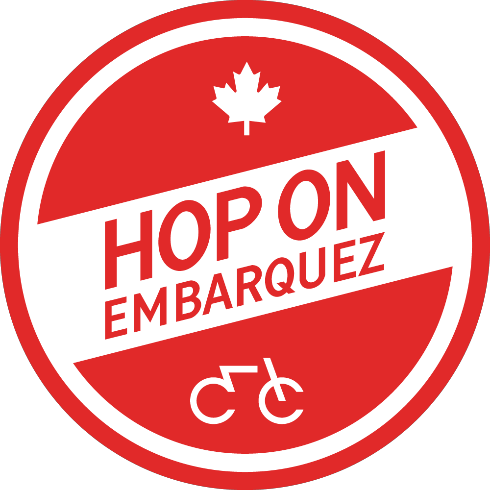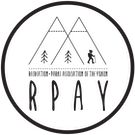Yukon winter urban cycling tips
Last updated: November 22, 2021

Don’t let the snow, ice and cold weather stop you from riding your bike to work, school, for errands and for fun.
Wearing the right gear and modifying your bike for winter riding will make a big difference in your comfort, enjoyment and safety.
This is our list of Yukon-specific urban cycling tips for those new to riding their bike in winter or to improve your winter cycling experience.
If you have suggestions of your own, email info@yukoncycling.com.
Prepare and maintain your bike
You don’t need a specific type of bike to ride in winter, but you should consider a few equipment modifications to have more confidence and be safer.
- Drop tire pressure (PSI) on both fat bike tires and regular sized tires for more traction. You want as much rubber as possible to make contact with the snow, especially your back tire. A "softer" tire absorbs bumps better, allowing you to keep control.
- Before each ride, check your tire pressure. If it’s too low, pump your tires up.
- Many people use studded tires for increased safety on ice and slippery surfaces. You don’t need studded tires but they do help tremendously.
- Clean and lubricate your chain, drivetrain and other bike parts at least once weekly. We recommend a lightweight, wet chain lube (one that’s designed for winter or wet conditions) so that your chain doesn't get gummy in the cold. In the winter you don’t want a faulty chain.
- Dry your brakes with a clean cloth after a particularly snowy or wet ride. This helps to avoid rust and corrosion.
- Lock and keep your bike outside. Opinions will be different, but we recommend if you ride to work, school or for errands leave your bike outside. Taking your bike inside to a 20°C building from being outside at -25°C means a drastic swing in temperature. This can result in excess moisture building up in bike cables, drivetrain and brakes. Before you start to ride again outside, spin the cranks and wheels, and test your brakes.
Layer your clothing, including head, hand and footwear
Don’t overdress, but also don’t underdress. Finding your personal balance is key and it will take you a few tries to get it right.
- Wear a base, thermal and windproof, but breathable layering system. Wearing a big warm puffy jacket will feel great...until you hit your first uphill.
- Wear a helmet and windproof thermal cap. Many riders switch to a ski or snowboard helmet in the winter for more wind protection, especially around their ears but regular bike helmets are perfectly fine too.
- A neck warmer will keep your neck and upper chest protected from wind and cold.
- Many cyclists wear a balaclava, but be sure it’s one with a large enough mouth hole so that you can easily breathe.
- A good pair of winter gloves or mitts, worn with liner gloves is vital. Use pogies if you are prone to getting cold hands. Avoid overly thick mitts as it will be difficult to pull your brakes or change gears.
- On your feet, we recommend a pair of vapour barrier socks and/or multiple socks (thin, wicking layer and thicker wool layer).
- The average winter boot can be sufficient, but depends on your feet. No matter what you wear, be sure to close any loose or open areas of the boots with gaiters or straps to keep warm air in, and snow out.
- Use flat pedals instead of clipless pedals so you can easily get on and off your bike.
Change your expectations and plan ahead
Riding in winter takes patience and practice. Consider your route before you leave.
- Start slowly to help gain confidence and refine your skills. We recommend you begin by only riding one-way and taking the bus or getting a ride home with a friend.
- Don’t push a big gear. Find your pace, settle in and teach yourself how to be comfortable with slippery connections between your tires and the snow.
- When it’s really cold, try to stick to rides that are shorter in length so you don’t put yourself into a dangerous situation if something goes wrong.
- Carry a charged phone in a warm pocket in case of emergency. At some point, there’s a chance you’ll crash or have a mechanical. If the weather is bad, you need to be prepared for the worst and have an exit strategy.
Avoid busy roads and stay aware
Safe and connected urban cycling infrastructure around downtown Whitehorse is getting better, but we’ve still got a ways to go. Cyclists outside downtown Whitehorse and in Yukon communities will have their own challenges, so take your time and be mindful of weather conditions.
- We recommend that you ride your proposed route on a weekend or walk your route before riding it to work or school.
- If possible, we recommend that cyclists stay off busy roads and instead use paths and less busy roads to get around. You may need to get creative with routes. What you ride in summer may not be passable in winter.
- Drivers in motor vehicles won’t always see you, no matter how many lights you have or how many reflective materials you wear. Be defensive and put your personal safety first.
- Check over your shoulders and look both ways before making your way across an intersection. Don’t cross in front of drivers who are rapidly approaching as they may not be able to stop in time due to ice or slippery road conditions.
- If it’s snowed recently, be extra careful and give yourself more time to get places. Regularly changing conditions is part of the fun of riding in winter!
- Look well ahead for obstructions in your path, off-camber hard packed snow surfaces or pinch points with traffic.
- Give way to pedestrians on paths. Be courteous and recognize that they may not be able to hear you coming.
- Use a bell when passing cyclists, pedestrians and others. If you’re on an e-bike, slow down when you’re near other people.
- Follow the rules of the road, Be mindful of winter driving road safety.
Be seen
The brighter you are, the better.
- Wear a high-visibility vest and other high-visibility straps or gear.
- If possible, try to avoid wearing a dark coloured jacket. Brighter colours are easier to see and reflect light sources better.
- Use white lights on the front of your bike and red lights in the rear. We also recommend running lights or reflective strips on the side of your bike. The goal is to be visible from different angle and positions. Remember, the Yukon is very dark in winter!
- Light batteries drain faster in cold weather, so fully charge your batteries before any ride and keep additional batteries on hand for non-rechargeable lights.
Riding your bike in winter to work, school and for errands can be a lot of fun. It’s a great way to get exercise, clear your mind and enjoy the beautiful place we live.
We hope that this list of Yukon-specific urban cycling tips helps make your winter biking experiences safer and more enjoyable.
Please share with your friends, family and others.





